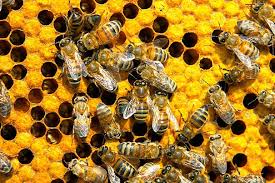25
Apr
Canadian Beekeeper’s Class Action Neonicotinoid Lawsuit Moves Ahead
 (Beyond Pesticides, April 25, 2018) A class-action lawsuit against two manufacturers of neonicotinoid insecticides is moving ahead in Quebec, Canada after an appeal to block the case by the Canadian government and the chemical companies, Bayer and Syngenta, was dismissed. In February 2018, the case, brought by a beekeeper, was allowed to proceed to trial by the Quebec Superior Court.
(Beyond Pesticides, April 25, 2018) A class-action lawsuit against two manufacturers of neonicotinoid insecticides is moving ahead in Quebec, Canada after an appeal to block the case by the Canadian government and the chemical companies, Bayer and Syngenta, was dismissed. In February 2018, the case, brought by a beekeeper, was allowed to proceed to trial by the Quebec Superior Court.
Quebec queen bee breeder, Steve Martineau, conducted tests on water and his dead and dying bees and found traces of neonicotinoids. His suit alleges that Bayer and Syngenta were negligent in the manufacture and sale of neonicotinoids in Quebec, and are responsible for damages that he and other class members suffered under Article 1457 of the Quebec Civil Code. Bayer and Syngenta challenged the application on a number of grounds including the assumption that they had manufactured the neonicotinoids which killed Martineau’s bees. The class in this case was authorized for all persons in Quebec who own or owned bees in the affected area since 2006. Mr. Martineau estimates he has lost about $20,000 a year to present due to the effects of neonicotinoids on his bee population (Martineau v. Bayer CropScience Inc. CALN/2018-007)
“We’re suing on behalf of Quebec beekeepers whose bees were non-productive or killed,” Mr. Martineau’s lawyer, Samy Elnemr said. In addition to the Quebec class-action suit, a Canada-wide lawsuit against neonicotinoid manufacturers is also being prepared to be filed and will be put before the courts soon.
On February 19, 2018, the provincial government introduced new restrictions on pesticides considered harmful to honey bees, including neonicotinoids. Under the changes, farmers will have to get permission from a certified agronomist before using certain pesticides on crops. The restricted pesticides include three types of neonicotinoids, as well as chlorpyrifos and atrazine, which has been banned in Europe for more than a decade. To ensure the implementation of these new regulations goes smoothly, the Environment Ministry will establish a monitoring committee to oversee the process. The province has already allocated $14 million over five years to assist farmers in reducing pesticide risks and adapting to the new measures. Advocates say the new rules represent a compromise. These chemicals may continue to be used, but inserting agronomic experts with an eye for both the economic and health concerns surrounding the use of highly toxic pesticides into the process may be a strategy to significantly reduce pesticide use. The good news is that by also improving recordkeeping, Quebec’s strategy can be closely evaluated to ensure the approval process is not simply a rubber stamp for pesticide use.
Numerous scientific studies implicate neonicotinoid pesticides as key contributors to the global decline of pollinator populations. Research on neonicotinoids has been consistent in linking their use to reduced learning in bees, as well as other impacts, such as those on colony size, and reproductive success. Studies looking at effects on birds reports that songbirds exposed to widely used insecticides, like neonicotinoids, fail to properly orient themselves for migration, the first such study that adds weight to arguments that pesticides are a likely cause in the decline of migratory bird populations. U.S. beekeepers lost an unsustainable 33% of their hives between 2016 and 2017.
Neonicotinoids are also detected regularly in the nation’s waterways at concentrations that exceed acute and chronic toxicity values for sensitive organisms. A new report from the U.S. Geologic Survey (USGS) finds neonicotinoid contamination of the Great Lakes that threatens aquatic life.The most recent aquatic assessment for imidacloprid finds that imidacloprid threatens the health of U.S. waterways with significant risks to aquatic insects and cascading effects on aquatic food webs. As a result of risks to aquatic organisms, the Canadian pesticide regulatory agency has recommended banning imidacloprid, a decision on which has been delayed. In Europe, a recent survey finds that streams across the United Kingdom (UK) are contaminated with neonicotinoids. The European Commission met on December 12 and 13, 2017 to decide on a proposal to extend the 2013 neonicotinoid ban to all outdoor crops, but this decision was delayed. The issue is expected to be on the agenda again in 2018.
Help push EPA to take substantive action on neonicotinoids by urging your Representative to support the Saving America’s Pollinators Act. With managed honey bee losses remaining at unsustainable levels and many wild pollinators at risk of extinction (1, 2, 3), it’s time, for the future of food and our environment, for the U.S. to finally protect pollinators.
Source: CBC Radio Canada










